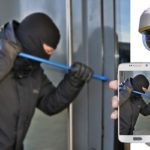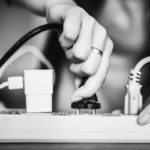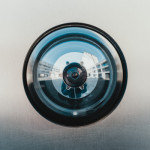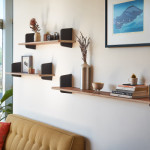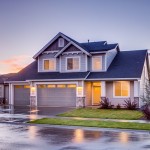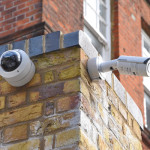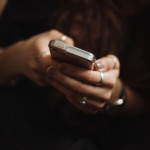Video Surveillance Tricks
Surveillance systems installed at your home or business help to enhance your security by allowing you to keep any eye on your property. They can aid in keeping your loved ones safe, as well as potentially deter criminals from targeting you. And after installation, there are ways to make the most of your surveillance system. Review these tricks to enhance your security.
- Learn The Ins & Outs
Security cameras have different features, so it is important that you choose one that suits your needs. It is also imperative that you learn what your surveillance cameras can do by reading manuals and watching tutorials as necessary.
- Get The Mobile App
Most surveillance systems have an accompanying app which allows you to access your feed and manage your system remotely, as well as provide alerts. Without it, you miss out on these great opportunities to enhance your security.
- Register For E-Mail Alerts
When motion or suspicious activity is detected, you will be notified via e-mail which may be accompanied by video footage.
- Register For Text Alerts
For even faster access, sign up for text alerts. You’ll get essentially the same alert you would via e-mail, but in a text.
- Choose The Right Cameras
As mentioned, it is important to choose cameras with the right features and functions that will cater to your specific surveillance needs. For example, night vision cameras are great for areas that need around the clock monitoring, and day/night cameras are great for outdoor use where lighting can vary. There are a multitude of security cameras on the market with a variety of features so you are sure to find the ones that suit your needs.
- Petsit & Babysit
Indoor security cameras can give you peace of mind when it comes to pets and older children who may be home alone.
- Understand Privacy Mode
If you want to record but don’t want the recordings to be visible remotely, you can turn on privacy mode.
- Set Scheduled Times
Rather than setting your security camera on motion detection only, you can set the times you want your system to record. You can watch the footage in real-time or at a later date, either on the web or your mobile device.
- Manage Your Cameras Remotely
As mentioned, you can manage your camera system remotely via an app installed on a PC or smart device.
Share your own surveillance tips and tricks with us on Facebook, Twitter, LinkedIn, and Pinterest.
If you need helping choosing a new security camera system for your home or business, please feel free to contact us! You can browse our stock online or give us a call 888-203-6294 to speak with one of our representatives directly. Your security is our priority and we are always happy to help.
Why You Should Install A Dash Cam
Dash cams are growing in popularity as more and more drivers are finding value in installing them. Whether you install a simple, front-facing dash cam or invest in a more comprehensive monitoring system for your vehicle, there are many ways these devices can benefit you. Here are a few reasons why you may want to consider installing a dash cam in your car.
- Accidents
When accidents occur, drivers recollections can vary. Normally, police would gather reports from those involved in the accident along with any eye witnesses. However, with dash cam footage, you have hard evidence of the incident which can help determine who was at fault and potentially save you from increased insurance rates. In addition, the video footage can possibly expedite your claim by avoiding numerous discussions with insurance companies to determine who was at fault. - Tickets
Your dash cam may save you from a wrongfully issued ticket. Since moving traffic violations typically give you points on your state driving record, which usually result in higher car insurance rates, it may be worth it to install a dash cam. If you feel you were wrongfully stopped, you can supply the officer with your dash cam footage. If the officer refuses to watch it, you can bring it to court to contest your ticket. - Insurance Fraud
Unfortunately, insurance fraud is more common than you would think. If you feel you may have been involved in or witnessed a staged accident, your dash cam footage can be turned into the insurance companies involved or the state insurance fraud unit for investigation. - Improve Driving
If you feel so inclined, you can review your daily driving videos to become a better driver. You can watch your videos to identify driving mistakes and ways to prevent them, such as braking too hard or switching lanes abruptly. - Teenage Drivers
If you have teenage drivers in the family, you can review their driving skills and habits so you can help them avoid accidents or tickets. For these cases, a two-way dash cam can help you see what’s going on both on the road and inside the vehicle. Not only can this help keep your child safe, but a clean driving record can keep your insurance rates low as well. - Security
Some dash cams provide a standby mode which allows the camera to turn on when motion in or around the car is detected. If someone tries to break into your car or hits your parked car, you get video footage to identify what happened and the persons responsible. You can submit this as evidence to the police as well as your insurance company to prove how the damage was done. - Unexpected Events
You’ve seen those viral dash cam videos that capture incredible events like meteors or other celestial events in the sky. While these are interesting and often once in a lifetime occurrences, you can also capture things like a deer running into the road causing an accident or a rockslide that caused damage to your car. In these instances, you can provide your insurance company with evidence to prevent rate hikes.
If you have a dash cam in stalled in your car, how have you benefited from it? What made you decide to install a dash cam? Share your experiences with your peers and us on Facebook, Twitter, LinkedIn, and Pinterest.
Visit SecurityCamExpert.com to browse our selection of security cameras, CCTV surveillance packages and more. You can call 888-203-6294 to schedule a site survey or request a FREE quote today!
Troubleshooting Tips For IP Security Cameras
After investing your time and money into choosing the best security cameras to suit your needs, it can be frustrating to come across issues with them not working properly. When your security system is down, not only is it a nuisance, but it can leave your property vulnerable.
Before giving up on your security cameras and shopping for new ones, review these troubleshooting tips for common security camera issues.
- Connection & Power
Though it may seem like common sense, sometimes we overlook the obvious. If your security camera is not working, check all of the connections. Make sure that the camera is correctly connected to the power source as well as any other devices.For wireless security cameras – Check the Wi-Fi connection (if the wireless security camera is connected successfully via Wi-Fi). You can use a network cable to test the network connection. Ensure your router is working properly and, of course, check the power supply.For wired or PoE security cameras – Make sure video signal and power supply is well transmitted. For a PoE security camera, check the PoE injector or PoE switch is in order, compatible and working. If you have an NVR security system, double check that all the connections to the system are correct and secure.
- Cabling
A majority of connection issues center around cabling problems. For example, if the IR LEDs do not turn on at night in the dark, it is likely a cable problem and no images or video recordings will come out.To check this, use another cable to connect the camera to see if the problem is solved. For a PoE security camera, you use a Cat 6 or Cat 5 Ethernet cable.
- Settings
It is easy to forget about camera settings. You may find that your security camera doesn’t do 24/7 recording, no motion detection alerts, can’t connect to Wi-Fi, or can’t record video at night all because you did not set up the settings. Remember: Security cameras do have features, some of which have been enabled by default and some that need manual enabling on your end.There is usually computer software or an app for a mobile device that is in place so you can easily control and manage your system, such as adjusting the settings accordingly.
- Reboot
The “Golden Rule” in IT troubleshooting is to reboot the device. When you reboot a security camera, it flushes the cache, recalibrates the settings, and revises the connections. To reboot you camera, directly unplug the power supply, wait for a few seconds, and plug it in again. - IP Address
Each IP security camera needs to have a unique IP address so it can send and receive data via the Internet or a computer network. If there is another device using the same IP address with the camera, there will be a conflict and your security camera will not work. If you are experiencing issues, check the IP addresses to resolve any conflicts.There are two ways to check:
- On a computer that is connected to your cameras, go to the Windows search box and type “cmd” to open the DOS command prompt. You can type the command “arp -a” to see if there are any IP conflicts.
- You may type the command “ping cameraIPaddress -t” (ex. for IP address 192.168.0.999, type “ping 192.168.0.999 -t“). If you received results with “Unreachable” or “Timed Out” it means the IP security camera is not connecting to the network. You should change the camera’s IP address or assign a new one.
- Update Firmware & Software
Most manufacturers regularly release firmware updates to fix security camera issues and glitches, and also to add new features. Make it a habit to regularly check the brand’s official website to see if new firmware has been released for your camera and update accordingly. Remember to make sure the firmware you download is the correct version for your security camera.If you can’t connect to the security camera via software, it’s likely due to incompatibility of the software and firmware. If you are updating your firmware, be sure to check for updates for your software as well.Remember, it is best to use the software or app from the manufacturer since it is designed to work with all the features of your security camera without compatibility issues. While third-party software exists, it may or may not be fully compatible with your cameras.
- Reset To Factory Default
This is often one of the last ditch efforts to resolve an issue. Factory reset means all settings and configurations will be removed and will go back to the “factory default” settings (you will need to enable features and other configurations again).Some security cameras come with a reset button, while others may come with a pinhole as the reset function, requiring a needle to enable factory default.
- Manufacturer FAQs
Most of you problems or questions can be answered by checking the FAQ section of your manufacturer’s website. Search keywords about your problem and you should get related troubleshooting methods. - Tech Support
If the FAQ section did not help, you may want to reach out to the company from which you purchased your equipment. Most companies offer tech support and you can reach out via email or phone call. Remember to provide as much details as possible and a professional technician should be able to help you fix the problem or offer alternative options accordingly.
If you need help choosing the right security cameras for your property, as well as installation services, feel free to contact us! You may browse our selection online at SecurityCamExpert.com or call 888-203-6294 to schedule a site survey or get a free quote. You can also find us on Facebook, Google+, Twitter, LinkedIn, and Pinterest.
Protect Your IP Surveillance System
These days, IP security cameras are much easier to use and are more commonly utilized for home security. Whether home owners want to watch their property or their pets, IP security cameras seem to be the surveillance solution of choice.
Unfortunately, these home security systems are often targeted by hackers and bots. To better safeguard your IP cameras and privacy, check out these helpful IP security camera tips.
Update Firmware
Modern IP security cameras provide user-upgradeable firmware. When a security vulnerability is found, the manufacturer will fix it by issuing a firmware update. If your cameras are operating with an older version, they may be vulnerable to exploitation from hackers or online voyeurs. Always be sure that your firmware is up to date and routinely check for updates to protect your system.
Keep Cameras Local
The concept is simple – If you are worried about your live feed ending up on the internet, do not connect your cameras to the internet.
To protect your privacy, keep your security cameras on a local network and assign them non-routable internal IP addresses (ex. 192.168.0.5 or the like). But even then, your cameras may still be exposed by camera software that sets up port forwarding or uses UPNP to expose your cameras to the internet. Make sure your cameras are set up on local-only mode – consult your installer or check the manufacturer’s website to learn how.
Assign Passwords To Cameras
All too often, users forget to add password protection on their IP cameras, and sadly, this is not usually turned on by default. Without this, IP cameras are left wide open and vulnerable.
Luckily, most cameras offer at least some form of basic authentication, and although it may not be much, it is better than nothing. Remember to protect your cameras by assigning a username and strong password and changing it periodically.
Change Defaults
We cannot stress this enough – Always, always, ALWAYS change the default usernames and password for your devices. In case you didn’t know, the default admin name and password for your IP camera is usually available on the manufacturer’s website in the support section. That said, if you don’t change these defaults, anyone could potentially access your security system, view your feeds, and control your cameras.
WPA2 Encryption
If you’re using a wireless camera, you should only connect it to a WPA2-encrypted wireless network. This will minimize the risk of wireless eavesdroppers connecting to your network and accessing your video feeds.
Be Mindful Of Locations
Don’t place IP security cameras in areas of your home that you wouldn’t feel comfortable with strangers seeing. Regardless of the security measures to protect your camera feeds, there is always a possibility of getting blind-sided by a Zero-Day vulnerability that hasn’t been found by the manufacturer yet.
Share your own tips and experiences with us on Facebook, Google+, Twitter, LinkedIn, and Pinterest. For a wide selection of IP security cameras and more, visit SecurityCamExpert.com or call 888-203-6294 today!
Safety Tips For 4th Of July Holiday
With Independence Day fast approaching, many of us are making plans to celebrate. Whether it’s a family outing to the beach or a fireworks show, or simply a backyard barbecue at home, heed these safety tips to keep yourself and your loved ones safe.
Fireworks Safety
Fireworks are safest when admired from afar (at least 500 feet). Look for local public fireworks displays and try to secure a prime spot early (as these tend to be crowded events). If your city allows fireworks and you decide to light them at home, please follow these safety precautions:
- Keep fireworks away from small children.
- Follow the instructions on the packaging.
- Keep a water supply close by (better safe than sorry).
- The person igniting the fireworks should always wear eye protection.
- Light only one firework at a time.
- Never attempt to relight a “dud.”
- Store fireworks in a cool, dry place and away from children and pets.
- Never throw or point a firework toward people, animals, vehicles, structures, or flammable materials.
- Leave any area immediately where untrained amateurs are using fireworks.
Grilling Safety
What is summer without backyard barbecues? As much as we love grilling under the sun, injuries are all too common when using backyard charcoal or gas grills. To prevent injury and maintain safety, follow these tips:
- A barbecue grill that is in use should always be supervised.
- Never grill indoors (ex. inside a house, camper, tent or any enclosed area).
- Make sure everyone (including pets) stays away from the grill.
- Keep the grill out in the open, away from the house, the deck, tree branches, or anything that could catch fire.
- For the chef’s safety, use the long-handled tools especially made for cooking on the grill.
- Never add charcoal starter fluid when coals have already been ignited.
- Always follow the manufacturer’s instructions when using grills.
Beach Safety
If your beach visit includes swimming in the ocean, be sure to learn how to swim in the surf within the designated swimming area and only when/where a lifeguard is present. In addition, be sure to obey all instructions and orders from lifeguards.
- Check local weather conditions and look for any warning signs or flags that may be posted.
- Always swim sober and with a buddy.
- Young children and inexperienced swimmers should wear Coast Guard- approved life jackets.
- Protect the neck – don’t dive head first. Walk carefully into open waters.
- Keep a close eye and constant attention on children and adults while at the beach. Waves can cause someone to lose their footing, even in shallow water.
- Watch for aquatic life – water plants and animals may be dangerous. Avoid patches of plants and leave animals alone.
Rip Currents
Rip currents are relatively strong, narrow currents flowing outward from the beach through the surf zone, posing a potential hazard to swimmers. In fact, rip currents are responsible for many deaths and lifeguards rescues on our beaches. Any beach with breaking waves may have rip currents, so be aware of the dangers and remember these things:
- If a person is caught in a rip current, it is advised to swim parallel to the shore until out of the current. Once free, turn and swim toward the shore. If they can’t swim to the shore, they should float or tread water until free of the rip current and then head toward the shore.
- Stay at least 100 feet away from piers and jetties – permanent rip currents often exist near these structures.
Sun Protection
You should limit exposure to direct sunlight between 10am and 4pm and wear a broad-spectrum sunscreen with a protection factor of at least 15 (reapply often). Remember to stay hydrated by drinking plenty of water regularly (thirsty or not) and avoid alcoholic or caffeinated drinks. Protect your eyes by wearing sunglasses that will absorb 100 percent UV sunlight. Also remember to protect your feet – hot sand can burn them and glass and other sharp objects can cut them.
During hot weather, watch for signs of heat stroke – hot, red skin; changes in consciousness; rapid, weak pulse; rapid, shallow breathing. If it’s suspected someone is suffering from heat stroke:
- Call 911 and move the person to a cooler place.
- Quickly cool the body by applying cool, wet cloths or towels to the skin (or misting it with water) and fanning the person.
- Watch for signs of breathing problems and make sure the airway is clear. Keep the individual lying down.
Share your own safety tips with us on Facebook, Google+, Twitter, LinkedIn, and Pinterest!
Don’t forget! We will be closed on Wednesday, July 4, 2018 for Independence Day. We apologize for any inconvenience this may cause. From everyone at SecurityCamExpert.com, we wish you a safe & happy Independence Day!
Home Security Mistakes & Tips
Making mistakes when it comes to your home security can compromise your safety, leaving you vulnerable to burglary and theft. When choosing the best home security system for you, avoid making these common security mistakes and ensure that you properly safeguard your home and loved ones.
Mistake: Buying The Wrong Home Security Systems.
There is no “wrong” home security system, however, what works for one person may not work for you. This is precisely why there are various types of security systems on the market.
In order to choose the best system for you, do your research. You want to look at different reviews from reputable sources. Search the security system you are eyeing, or the type of system you’re looking for. In addition to reviews, pay attention to any complaints from real buyers that you may come across. There may be legitimate issues that you should know about before making a purchase.
Also, these are some important features you should consider when shopping for a security system:
- Remote monitoring
- Real-time notifications
- 911 & emergency services
- Input capacity
- Ease of installation
Lastly, to help you make the right decision, and possibly save you time, you should speak with a security professional. With expert knowledge and experience under their belt, a security professional will have a better idea of which type of security will best suit your needs.
Mistake: Not Testing Your Configurations.
It is rare that one home security system is enough for all your home security needs. For added protection, some components to consider may include:
- Indoor and outdoor cameras
- Motion sensors
- Smoke detectors
- Carbon monoxide detectors
- Glass break detectors
- Door and window sensors
- Freeze sensors
- Water sensors
- Driveway sensors
Of course, these are just some of the many components you may or may not want to add to your system. Whether you have one security camera or 20 different cameras and sensors, you should test all of them to ensure proper configuration and performance. For example, you may not know that your camera is poorly positioned or that your alarm system was not properly activated.
Try simulating a break-in with a friend, family member, or your pet to determine the capabilities of your home security system. Most criminals are seasoned vets so they probably know how to bypass one of more components of your system, thus having more aspects can help to ensure they are stopped.
Mistake: Lack Of/Poor Maintenance Of Home Security System.
Your security system should be maintained on a regular basis, whether it’s weekly, monthly, semi-annually or annually – do what’s best for what you need. Maintenance can involve various things such as updating software, changing batteries, changing faulty or defective parts, and more.
Professional Maintenance
Professional maintenance can be done annually or semi-annually. You may want to check if your vendor offers any maintenance packages in the service contract. If they don’t, you can enlist the services from a home security inspection company.
The services typically consist of the following:
- Repair or replace broken parts of your home security system
- Test the control panel and all other components of your home security system
- Check that signals are sent to and received by the monitoring center
Professional maintenance ensures that there’s no guesswork in handling, fixing or replacing faulty components of your system.
DIY Maintenance
Your DIY checklist should include:
- Check/change exterior lighting to ensure clearer pictures or videos for your surveillance cameras
- Simulate intrusion to check if motion sensors will detect it or trigger the right alarm
- Test your control panel if it has a test model but if your system includes remote monitoring (which it should), inform the monitoring team to avoid starting a false alarm
- The National Fire Alarm Code requires annual inspection of residential household fire systems, but you can press the test button of your smoke detector to see if it’s functioning properly from time to time
Keep these tips in mind in order to avoid these critical mistakes when shopping for a home security system.
If you’re looking for quality CCTV surveillance systems and security cameras for smart prices, feel free to browse our stock online at SecurityCamExpert.com or call 888-203-6294 to speak with an expert today! Find the latest news and updates on our Facebook, Google+, Twitter, LinkedIn, and Pinterest pages.
Home Security Camera Placement Tips
When it comes to security camera systems, you can invest in the best, most advanced equipment, but choosing poor locations for your security cameras can render your system ineffective.
In order to choose the best placement for your surveillance cameras, you should consider the layout of your property and which areas need monitoring. Most home or business owners target high traffic areas and entryways.
Here are more helpful tips for installing your security cameras.
- The most commonly targeted entryways are the front door, back door, and first-floor windows, so be sure these are under video surveillance.
- In addition, a security camera at the front door can act as a digital peephole since you can access your live feed to see who’s at the door. You can place it above the door or window frame facing downward so that it covers the area a few feet in front of the opening. Or you can place it inside your home on the window sill overlooking the front yard.
- The type of camera will also help determine where it should be placed. Surveillance cameras with a focus range of around 45 to 75 degrees should be aimed at specific areas (ex. doorway, garage). Wide angle cameras should be placed where they can view 75 to 180 degrees without any obstructions. For security cameras that can rotate, be sure to check with the manufacturer for information on how much unobstructed viewing area is necessary.
- For surveillance cameras being installed outdoors, be sure they are waterproof, vandal proof, and have night vision capabilities in order to record overnight. Motion detection lights around the perimeter of your home can also help capture quality recordings as well as deter burglars from approaching.
- In addition, when placing security cameras outdoors, you want them to be visible yet out of reach. By installing them at least 9 feet above the ground, you decrease the likelihood of tampering, vandalism, or theft of your cameras.
Do you have any security camera placement advice or tips to share? Connect with us on Facebook, Google+, Twitter, LinkedIn, and Pinterest.
Shop our great selection of quality CCTV security cameras and surveillance systems for your home or business. Visit us online at SecurityCamExpert.com or call 888-203-6294.
Home Security For The Holidays
The holidays are here, and whether you’re hosting the festivities or going out of town, you want to make sure your home is secure. First and foremost, if you don’t have them already, you may consider installing a home security camera system. A home security system will alert you if and when your alarm system is triggered or motion is detected, and security cameras can record pertinent footage as necessary. Should these alerts indicate criminals are on or around your premises, you can quickly contact authorities. For those of you who will be away for the holidays, an empty home is prime target. You should employ measures to make it seem like someone is home. The following are some security tips and advice to safeguard your property and avoid being targeted by thieves.
Hire a house or pet-sitter.
If possible, and if you feel comfortable with it, hire an overnight house-sitter. Before hiring, be sure to do a background check. Depending on your needs and instructions, duties may include mowing the lawn, taking the trash out, shoveling the driveway, or feeding and walking pets. If you are not comfortable with a stranger staying in your home, you may want to enlist a trusted friend or relative to either stay at your home or stop in regularly to handle these tasks.
Put your mail/newspaper subscription on hold.
Nothing screams “we’re away” more than mail and newspapers piling up. Ask your post office to hold your mail or have someone collect and sort your mail daily. If you have a newspaper subscription, pause delivery or inquire about switching to an online subscription.
Make use of curtains.
As previously mentioned, for burglars, there’s nothing more alluring than an empty home. For small windows, you want to close the curtains to shield your home from prying eyes. But you also want to keep some curtains ajar as curtains closed all day and night may look suspicious.
Set up sensors and timers for lights and sprinklers.
Along the same lines, invest in timers and sensors that can turn on and off at random intervals or that you can control remotely. These can help with the illusion that someone is home and are more cost and energy efficient than leaving your lights on.
Unplug electronics.
Avoid any potential accidents by unplugging your electronics and appliances. That way you can rest easy knowing you didn’t accidentally leave something on.
Leave a radio on.
Much like the lights make it appear that someone is home, the sound of a radio will do the same. An inexpensive, battery-powered radio should suffice.
Turn down the doorbell volume.
Some burglars are bold and will go so far as to ring the doorbell to confirm whether someone is home or not. If you lower the volume of your doorbell, and possibly have a radio on, they might assume the homeowners just can’t hear someone at the door.
Don’t leave spare keys at home.
Hiding keys around your home never a good idea when you’re away. Be sure you’ve collected all your keys before you leave. If you worry about losing them while on vacation, leave them with a trusted family member or neighbor.
Double and triple-check your doors.
You want to check all your doors and windows and any other point of entry before you leave to ensure they are locked and secure. Be sure your locks are working properly. If possible, install two or three locks on your main and back doors for added security.
Light up your surroundings.
Keeping the exterior of your home well-lit will help to keep intruders away. Most like to sneak around in the dark so installing a few motion-sensitive lights around your home should deter them from approaching.
Be wary of sharing information.
Social media is a fun way to keep your friends and family up-to-date on what’s going on in your life. Unfortunately, thieves like to watch social media for any easy targets. Try to avoid announcing when you will be away, constantly checking in and sharing status updates about your trip, especially if your accounts are public.
Invest in a security safe.
A quality safe hidden in your home can keep your valuables (ex. jewelry, important documents) safe. A safe will reduce the chances of burglars making off with anything valuable. A secure combination can stall them until police arrive, and bolting your safe down will add extra security.
Don’t leave a portable GPS in the car.
These days, most cars have built-in GPS systems, but if you utilize a portable GPS, do not leave it in plain sight. This is especially important if you’re leaving your car at the airport or somewhere else. Often times, when thieves break into your car and access your portable GPS, they may figure out how to get to your unattended home.
Share your own home security tips with us and your peers on Facebook, Google+, Twitter, LinkedIn, and Pinterest!
For a great selection of security cameras and CCTV surveillance equipment, visit SecurityCamExpert.com. Call 800-203-6294 to speak with a representative and inquire about our free quotes and site surveys.
Text-To-911: What You Should Know
Imagine getting a notification from your security camera system that movement is detected in your home. If you are out of the house, you can check the feed and call 911. But what if you get the notification when you are home alone? You can try to escape, but if that is not feasible, your next best bet would be to lock yourself in a room and hide. In this situation, calling 911 could possibly give your location away, but what if you could send a text to 911 to discreetly summon law enforcement?
If you live in Pomona or elsewhere in the Los Angeles County, as of December 1, 2017, you are able take advantage of Text-To-911. This convenient option gives hearing and speech-impaired individuals, along with those in situations in which it is too dangerous to call 911, a potentially lifesaving option. But the Federal Communications Commission (FCC) reminds everyone to “Call if you can — text if you can’t“.
Here are the FCC’s guidelines for contacting 911:
- If you can, always contact 911 by making a voice call.
- If you are deaf, hard of hearing or speech disabled, and Text-To-911 is not available, use a TTY or telecommunications relay service, if available.
- If you send a text to 911 and the service is not yet available in your area, you will receive a bounce-back message advising “text is not available please make a voice call to 9-1-1” or use telecommunications relay service (for persons who are deaf, hard of hearing, or have a speech disability). Note: Bounce-back messages are intended to minimize your risk of mistakenly believing that a text to 911 has been transmitted to an emergency call center.
- Location accuracy varies by carrier and should not be relied upon. Be prepared to give your location.
- Text-To-911 service will not be available if the wireless carrier cannot ascertain a location of the device sending the message.
- Text-To-911 is not available if you are roaming.
- A text or data plan is required to place a text to 911.
- Photos and videos cannot be sent to 911 as they cannot be received at the 911 center at this time.
- Text messages should be sent in plain language and not contain popular abbreviations (SMH, LOL, ICYMI) or emojis, as they will not be recognized.
- Text-To-911 cannot be sent to more than one person. Do not send your emergency text to anyone other than 911.
- Text must be in English only – there is currently no language interpretation for text available (still in development).
- Remember that the FCC’s Text-To-911 rules do not apply to text messaging applications that do not support texting to and from U.S. phone numbers.
- Text messaging applications that only support texting with other app users or texting via social media are not required to support Text-To-911.
As we all know, texting can be extremely dangerous in certain situations, but in others, such as Text-To-911, it could save lives.
Protect your property with quality CCTV surveillance cameras and equipment from SecurityCamExpert.com. Browse our stock online or call 888-203-6294. Find us on Facebook, Google+, Twitter, LinkedIn, and Pinterest for the latest news and updates.
